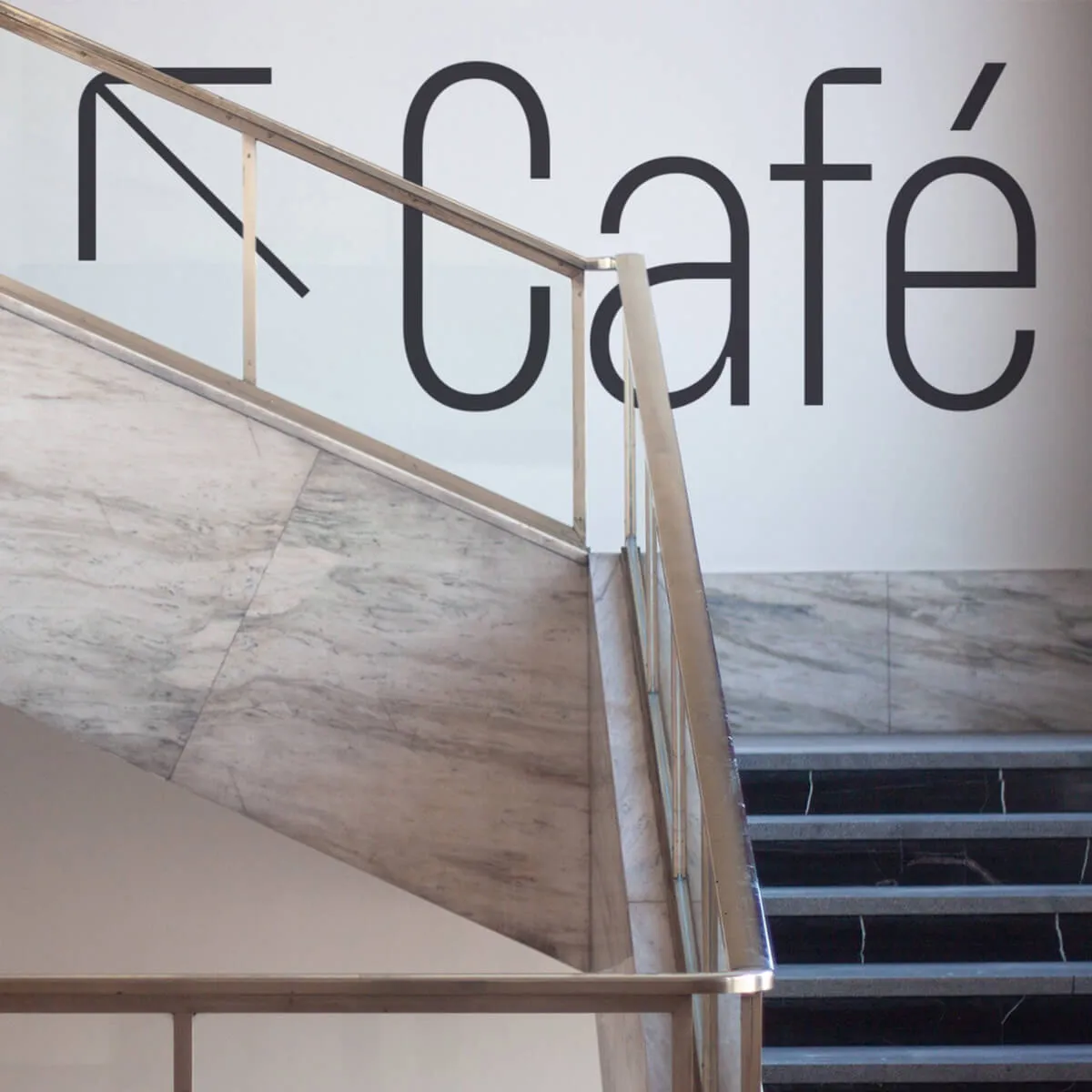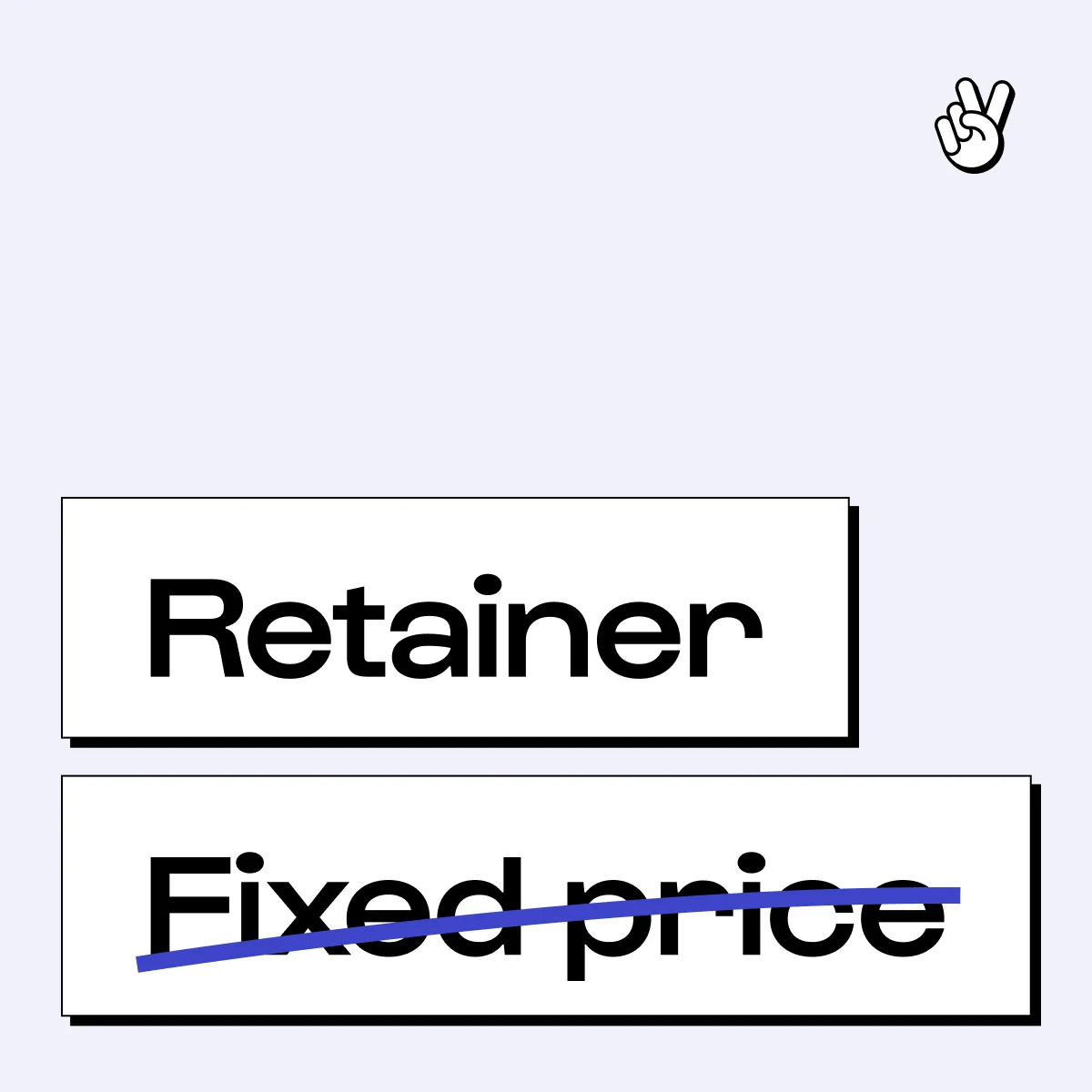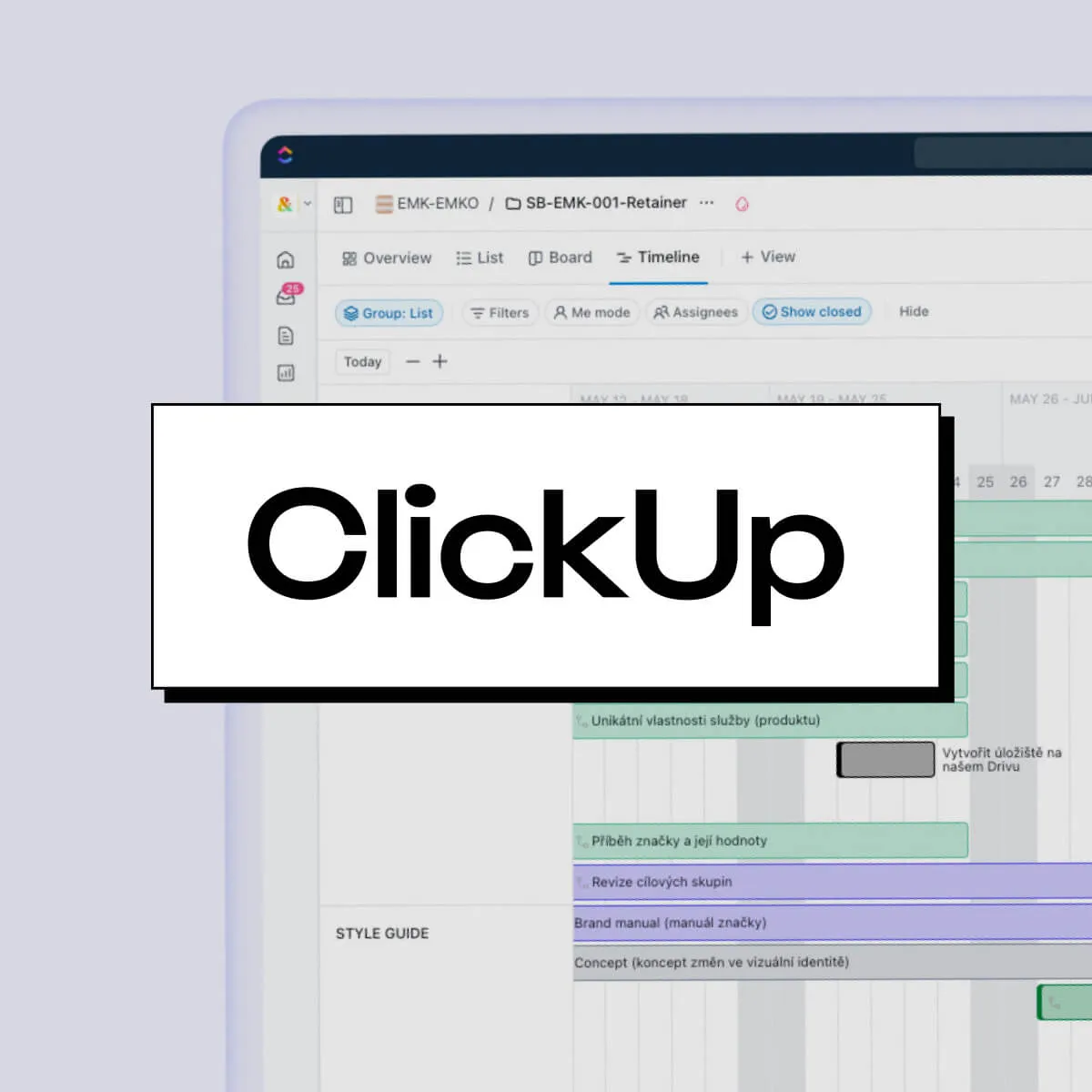Typefaces are created and serve to convey information. In brand design, however, they also serve other functions. They determine the tone of communication and can play a major role in your brand's visual identity. Let's take a look at what is important to consider when choosing the right typeface.
General Factors for Choosing a Typeface
Relevance
The typeface creator naturally has different priorities designing a font for a company logo compared to designing a typeface for paragraphs in a book. Not many typefaces are versatile enough to perform well across the entire spectrum of communication outputs.
For this reason, most brands don't settle for just one font family and typically pair at least a primary (title~headline) and secondary (body) typeface.
For fonts used in longer paragraphs on the web or in printed materials, legibility and other technical factors are important. For headline typefaces, aesthetics and originality may play a bigger role.
It's not a rule that a brand must use the same typeface in headlines as in the logo. Objective reasons include higher and more specific requirements for legibility or stylization of letters in the logo, as well as the usual longer lifespan of the logo compared to other components of visual identity.

[.c-quoteboxlight]“A simple analogy for ‘font’ vs ‘typeface’ would be ‘track’ vs ‘song’. People use the two terms interchangeably but everybody usually understands what is what.”
[.c-namebox][.c-name]Stéphane Elbaz, General Type Studio[.c-name][.c-namebox][.c-quoteboxlight]
The typeface must be uniquely yours. When choosing it, look for answers in your brand strategy, especially in those parts of the manual that deal with emotions and tonality.
- Serif or sans-serif?
- Traditional, modern, or trendy?
- Neutral or distinctive?
- Geometric or playful?
- Bold or warm?
- Original or universal?
- High contrast or perfectly readable?
Perhaps the choice will be simple if you base it on rules you've defined before, and in a new context, ask questions like: Who are your customers? What emotions do you want to associate with your brand? What are the habits in your industry (and would it be useful to deviate from them)?
Quality
Visually simple typefaces are usually more legible, contributing to accessibility for people with visual impairments. When making decisions, not relying on the assumption that people see well will enhance the perception of your content for everyone, especially in non-standard situations. Poorly readable typefaces can become completely unreadable when very small or when the sun is shining directly on the screen.
Another consideration when choosing a typeface may be the number of its variants. The standard is to have at least a bold and italic version, but type foundries often offer many more variations, even to the extremes. Some typefaces can smoothly transition between these extremes – these are called variable.

Fonts are often supplemented with special characters and features that can, for example, combine the letters "f" and "i" into a common ligature to avoid disruptive overlap of characters, or allow you to switch between several variants of a single letter. Designers guiding you through choosing a typeface will also evaluate the optical consistency of characters and the spacing between them.
Don't forget to consider the languages your customers speak. Each font covers a different spectrum of characters. You probably need some accents and diacritics now, but will you be using Scandinavian diacritics or Cyrillic in a few years?

Although you'll likely have to rely on experts when choosing a quality typeface, you can reduce uncertainty by trying it out. Choose the touchpoints that are most important for your brand and test the typeface on them. Test it on the web and in print. Use real texts. You may be surprised how often you encounter issues with legibility, missing characters, or strangely large gaps. If you manage to avoid these, you're probably on the right track.

Price and License
In today's world, there is a decent range of free typefaces available. Their main disadvantage is quite clear – high-quality ones will likely be used by many other companies in their communication. Whether you decide to go this route or invest in a typeface, be aware of buying a pig in a poke.
Even before the widespread use of the internet, and in its early days, typefaces were treated more like software. The only option for scaling licenses was based on the number of copies (and some type foundries still maintain this approach today).
[.c-quoteboxlight]“The reason licensing terms differ from foundry to foundry is that each foundry has to determine what they think is fair, and what they need to charge to make it work. If all foundries had the same licensing and pricing, that would be cartel pricing, and that’s not good for anyone. And, if you're ever concerned about the licensing terms offered by an independent foundry, you can almost always email that foundry, and they will be happy to walk you through any questions. At the end of the day, independent foundries want to help designers and companies make beautiful typography happen.”
[.c-name][.c-namebox]Stephen Nixon, Arrowtype[.c-name][.c-namebox][.c-quoteboxlight]
Once programming languages and browsers allowed designers to add more than just a few default system fonts to websites, font creators began working to ensure their products were well-prepared for new media. Logically, they wanted to be paid for this.
At the same time, they wanted to protect against situations where the added value of a copyrighted work significantly exceeds the price at which it was obtained. In short, so that a company like Adidas couldn't buy a typeface for $100 and print it on clothing distributed worldwide.
Free Typefaces
Some type foundries supplement their portfolios of paid fonts with fonts that are available for free. In this case, however, you often encounter fonts that are legally usable only for personal (non-commercial) purposes.

Google Fonts have dominated the market of freely available fonts for many years. Unlike older websites where you could download free fonts, Google's fonts go through a qualitative filter (at least to some extent), and their creators get paid (at least something) for their release.
Google Fonts were primarily created as a catalog of web fonts, offering (or rather forcing) the option to generate code and immediately use the typeface on your website.
[.c-tipboxlight]When you download a typeface and upload it to your own hosting, you may achieve better loading speed by removing characters you don't need (subsetting). For the most widely used typefaces, it may be worth using the speed and stability of Google's servers, as the browser will react faster when it encounters the font on another website (thanks to caching).[.c-tipboxlight]
Typefaces available for download on Google Fonts are usually – but not always – published under the SIL Open Font License, which is very generous and allows modifying and even publishing the fonts in a modified form. So, if you fall in love with a Google font but find that it has its flaws, you can have them fixed. Or you can have the font modified – adding unique elements to it, even though it comes from a freely available source.

Interesting alternatives that bring together freely available fonts seem to be Free Fonts by Awwwards or Free Faces, but they focus more on trendy creative typefaces, and you'll rarely find a high-quality typeface suitable for a wide range of uses.
Rented Typefaces
On the border between freely available and paid are typefaces offered by Adobe. Designers have access to their database as part of their tool subscription (such as Photoshop) and can use them for commercial purposes.
[.c-quoteboxlight]“Fontstand also offers rent-to-own font licenses in a different model that is great for short-term campaigns, as well as inexpensive access to foundries that are not widely distributed elsewhere.”
[.c-name][.c-namebox]David Jonathan Ross[.c-name][.c-namebox][.c-quoteboxlight]
Adobe Fonts are embedded on the web just like Google Fonts, but their downloading to the desktop is different. Typefaces are synchronized through the Adobe application and are directly tied to the user's account. If the subscription is terminated or if Adobe decides to remove a typeface from its database, the designer loses the ability to use it.
[.c-quoteboxlight]“The Adobe license is only valid if the fonts are actually served from the Adobe servers. A special code has to be used. And the subscription has to be in the name of the website owner. We encounter many cases where developers used their own Adobe CC for their clients. That is NOT allowed.”
[.c-name][.c-namebox]Veronika Burian, TypeTogether[.c-name][.c-namebox][.c-quoteboxlight]
Adobe Fonts can serve as a catalog, but if you choose a typeface from it, I would recommend finding the creator and buying fonts directly from them. Among other things, this ensures that a higher proportion of your payment goes to the creator, not the distributor.
Purchased (so-called Retail) Typefaces
How Do Licenses Work for Paid Fonts?
Some type foundries aim for maximum simplicity in licensing terms, while others can be confusing. Beyond the division into basic and web licenses, you'll find additional specifics in the conditions of many type foundries. After filling in all the purchase details, the final price may differ significantly from the advertised one.
What To Expect When Buying a Typeface?
- Desktop: The basic license, the price of which is determined by the number of computers on which you will install the typeface. Just a few years ago, you could rely on it to cover most possible uses of the typeface except for web pages. Today, be careful to read the other points on this list.
- Web: The price is determined by website traffic, usually in MUV (monthly unique visitors) or MPV (monthly page views).
[.c-warningboxlight]Some type foundries require a separate license for each domain. Some even sell annual rentals instead of a one-time purchase.[.c-warningboxlight] - Logo: Some creators charge separately for using the typeface in a logo. If you plan to use the typeface in a logo and don't encounter this option during the purchasing process, make sure to read the entire license thoroughly.
- App: If you want to use the typeface in a mobile application, some creators will scale the price based on the number of applications, while others will base it on the number of active users.
- Online ads: You may often encounter fees for using the typeface in online advertising. However, creators increasingly charge separately for common use on social media, basing the price on the number of followers.
- Video, motion, or broadcast: Some type foundries charge separately for use in animations, videos, films, or on television.
- ePub: Occasionally, you may encounter the option to purchase licenses for use in e-books.
Some creators consider a combination of several media as standard and include them in the default price. Others have a purchasing process divided into many checkboxes. And some require you to request a price quote if you want to use the typeface somewhere other than on a poster in your office :)
Merchandising is usually hidden in the license text. You'll likely need a special license if you want to use the typeface in materials that you sell (e.g., clothing). Sometimes, even basic licenses exclude use in outdoor advertising, and we've seen restrictions on using the typeface in political or religious contexts.
In most cases, I would recommend choosing typefaces with the simplest license structure that provides the broadest range of possible uses. You don't want to check whether your company has exceeded the font license limit every time it takes a step forward.
[.c-warningboxlight]Because each creator can set their own terms, be sure to read the entire license. You may be surprised by what you can't do.[.c-warningboxlight]
Type foundries have no chance of systematically controlling the factors mentioned above*, so some of them offer the option to skip this detailed setup and buy the so-called Enterprise license. Its price is then derived based on the number of employees, placing less emphasis on how many people will work with it and where the company will use it.
[.c-warningboxlight]*The presence of the font on the web is detectable, and there are companies that specialize in finding illegally used fonts on websites.[.c-warningboxlight]
Custom-Made Fonts
If originality and uniqueness are crucial for your brand's identity, and as such you want to give great importance to its typeface, a type foundry can create a font completely tailored to your needs.
How Much Does a Custom Font Cost?
If you want to give your brand its own typeface, its cost could easily exceed the price of visual identity design. Creating a quality typeface is a job that takes several months. Typically, the type foundry will charge for the work itself (or for responding to specific requirements), and negotiations will also involve licensing terms.
The crucial difference is exclusivity. If you don't insist on it, the font creator can sell the typeface to others, and the creator may earn back their time investment that way. However, if you require that no one else can use the typeface, the budget for the license alone will undoubtedly be in the tens of thousands of dollars. The number of years you want to fix the exclusive license for will play a significant role.
A cheaper alternative to a completely custom typeface could be a partially modified typeface. I touched on this topic with freely available typefaces, but type foundries are often willing to modify a typeface they sell (or have in a drawer). This way, you can reach an interesting compromise with a font that is based on an existing typeface but contains original elements specific to your brand.
Modifying a typeface directly from the creator can be preferable even when you want to use the font in a logo. A typographer can adjust a specific group of characters to work as effectively as possible in a given word.

Don't Hesitate to Ask
An early investment in a quality typeface can save you time and money later on. If, however, your hands are tied by the budget, try to reduce the risk of misstep by thoroughly discussing the typeface with your designers or directly with the creators. If you need to talk about fonts for your project, don't hesitate to reach out to our friends who helped us with this article. They are Arrowtype, David Jonathan Ross, General Type Studio, Kometa, and TypeTogether.









